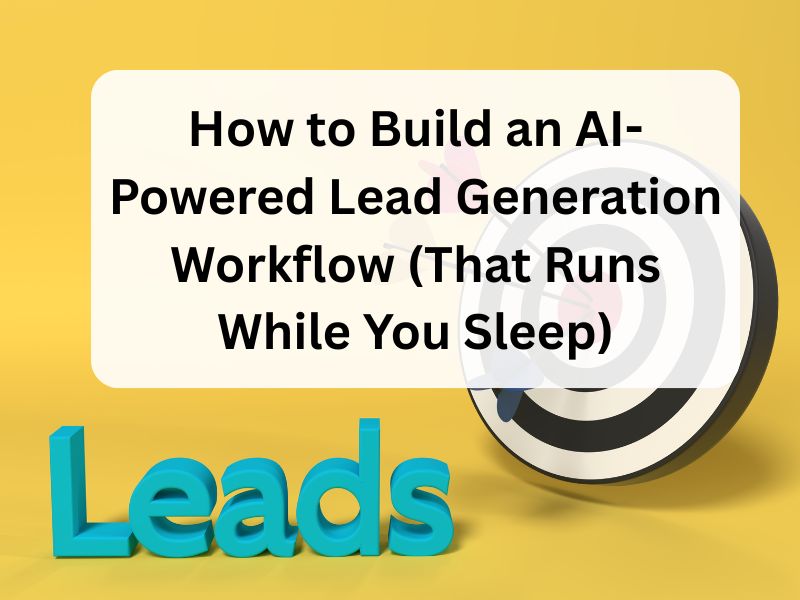Tired of chasing leads manually? What if you had an AI assistant doing it for you 24/7—without hiring anyone?
This guide will help you build a fully automated lead generation machine using AI and no-code tools. It’s perfect for founders, solopreneurs, and lean teams who want consistent inbound leads with minimal effort.
Step 1: Define Your Ideal Client Profile (ICP)
Start by getting extremely clear on who you’re targeting. This helps you avoid wasting time on low-quality leads.
Define:
- Job title(s)
- Industry or niche
- Company size
- Primary pain points
If you’re not sure, use ChatGPT to help generate your ICP based on previous client data or business goals.
Step 2: Automate Lead Collection
Use tools like Clay or PhantomBuster to collect leads from platforms like LinkedIn. These tools let you search for your ICP and export contact data automatically.
Save this data in a central location like Airtable or Google Sheets to make it accessible for enrichment and outreach later.
Step 3: Enrich Leads with AI
Don’t email a cold list without context. Use data enrichment tools like Clearbit or Apollo to pull additional information (e.g., company size, tech stack, funding stage).
Use OpenAI GPT to summarize the lead’s website or LinkedIn profile, creating quick overviews that help you personalize outreach.
Step 4: Score and Segment Your Leads
Not all leads are worth the same effort. Use GPT to auto-score leads based on how well they match your ICP.
For example:
- Score 9–10 = Hot
- Score 6–8 = Warm
- Below 6 = Cold
Segment them in Airtable so your outreach strategy can adapt to each group.
Step 5: Automate Personalized Outreach
Using tools like Make.com or Zapier, you can generate custom emails with GPT prompts and send them through Gmail or MailerSend.
Tips for great AI-powered cold emails:
- Reference their business or recent activity
- Highlight their specific pain points
- Keep it under 100 words
- Include a clear call-to-action (e.g., “Want to chat for 10 minutes this week?”)
Step 6: Follow Up Automatically
Follow-ups are essential. Set up automation rules to send:
- A second email 3 days later if no reply
- A third email 7 days later with added value (e.g., a case study or free resource)
Use GPT to craft follow-ups that feel human and tailored, not robotic.
Step 7: Track and Review Performance Weekly
Use GPT or Airtable scripts to:
- Summarize reply rates
- Identify top-performing email templates
- Highlight the most responsive lead segments
This allows you to constantly optimize your workflow without digging through data manually.
Tools Used:
- Clay or PhantomBuster (for scraping)
- Airtable or Google Sheets (data management)
- GPT-4 via OpenAI (enrichment + email writing)
- Make.com or Zapier (workflow automation)
- Gmail or MailerSend (email delivery)
Final Thoughts
Once this system is in place, you’ll have a fully automated lead generation process that brings in qualified prospects—without you lifting a finger after setup.
Want help building your own AI-powered lead system?
Book a free discovery call and let’s map it out together.

